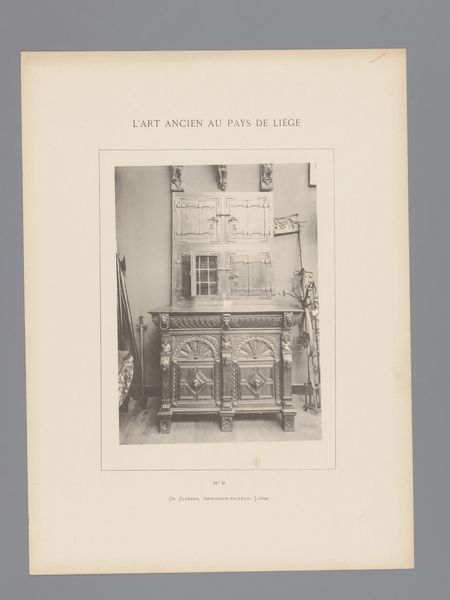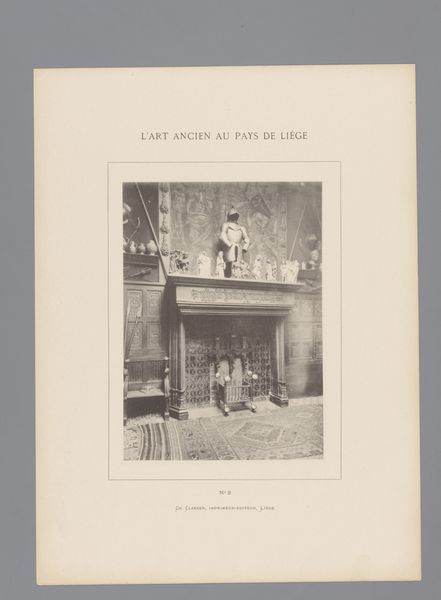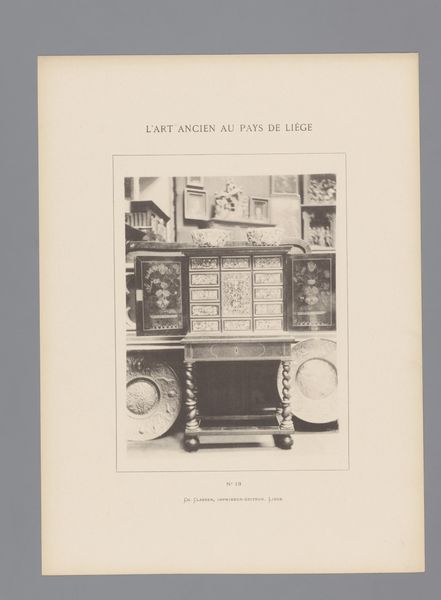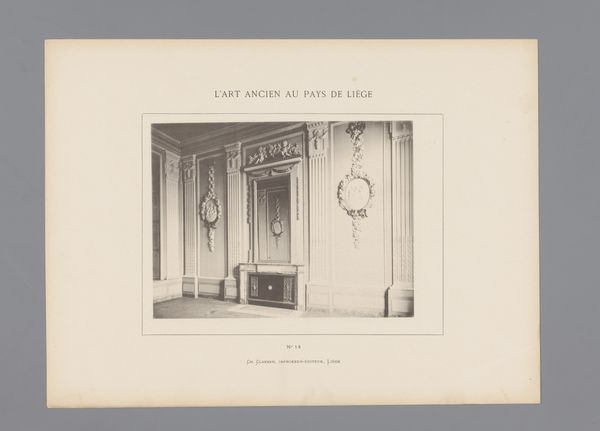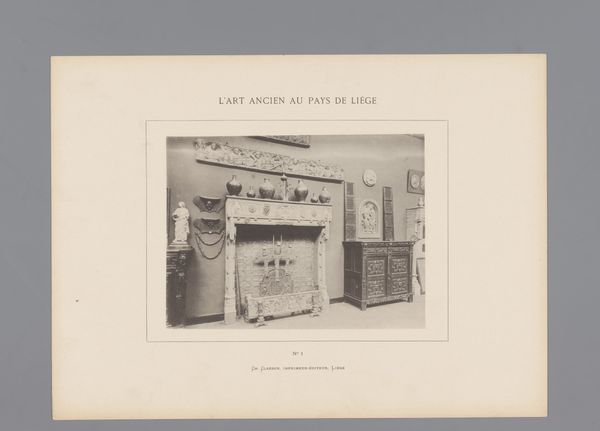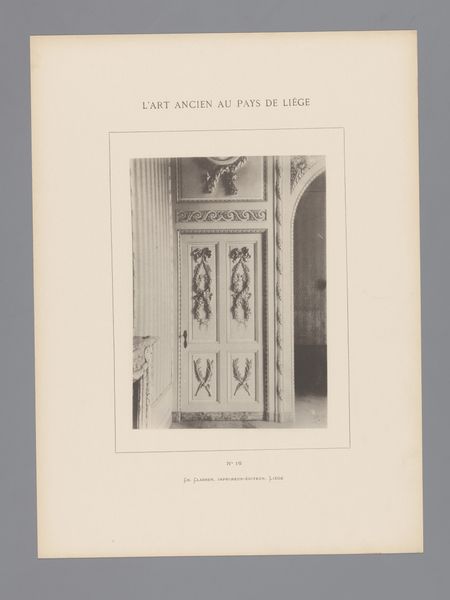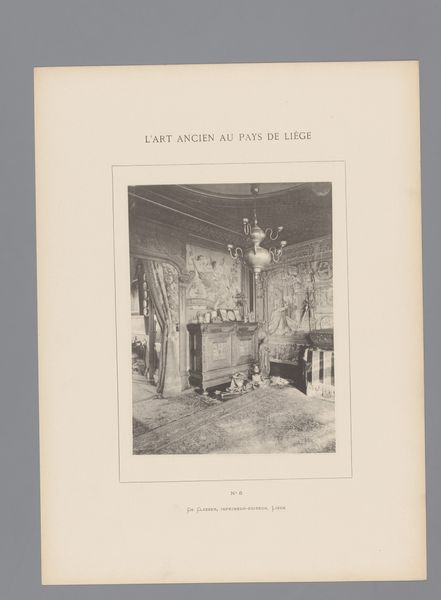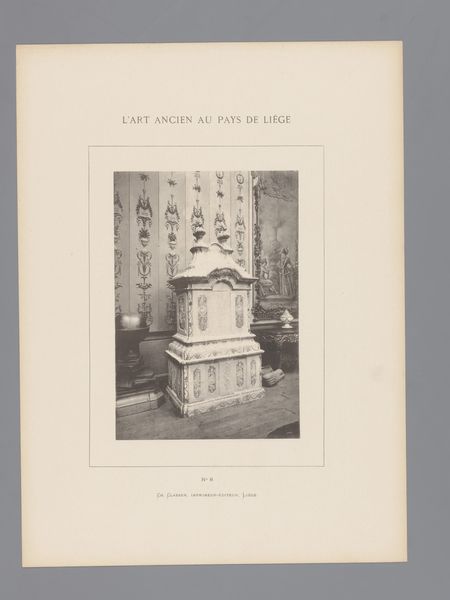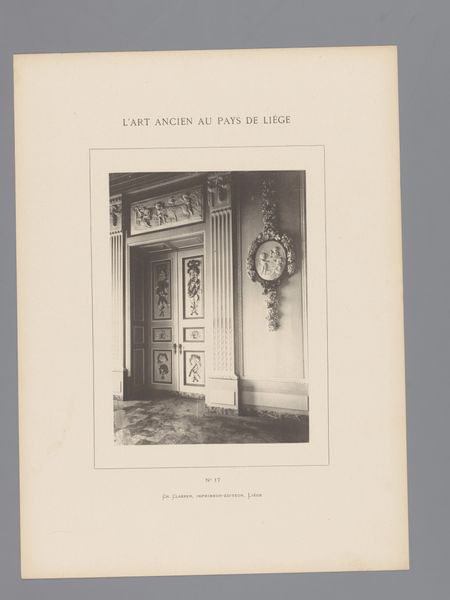
Schoorsteenmantel met vazen, opgesteld in het archeologisch museum in Luik, België before 1884
0:00
0:00
print, photography
# print
#
photography
#
history-painting
#
academic-art
Dimensions: height 221 mm, width 162 mm
Copyright: Rijks Museum: Open Domain
Curator: Let’s turn our attention to this photographic print titled 'Schoorsteenmantel met vazen, opgesteld in het archeologisch museum in Luik, België,' dating from before 1884. It gives us a fascinating glimpse into how historical artifacts were presented, doesn't it? Editor: It does, but my first impression is… stuffy. The stark black and white flattens the objects and they just seem crammed together in front of the imposing fireplace. Almost suffocatingly ornate, but, somehow intriguing. Curator: It's certainly a very stylized, academic way of displaying objects. The print itself would have been relatively easily produced and disseminated at the time, bringing these objects, this particular arrangement, to a broader public. Note the collection of weaponry placed as if guarding the mantelpiece – symbols of status and power in pre-industrial Europe, perhaps. Editor: You're right, that makes it a social document too! Although that collection is haphazard; they strike me more like discarded toys than symbols of power, particularly given their proximity to those elegant vases. Is there any order or connection among the presented objects? Or do they stand for themselves? Curator: Well, the presence of decorative plates suggests perhaps the burgeoning appreciation of history and historic design happening at the time. The manufacturing of decorative plates allowed greater and varied production and easier access to artworks for an emerging class of consumers. Editor: A fireplace, though? You want it to give warmth and feeling, not like a stiff archaeological study in monotone! But still… the objects displayed make me feel like I could just sit down, maybe smoke a pipe, pretend to be in an 18th-century novel, and slowly lose myself. Curator: I suppose there’s always something compelling about viewing relics and traces of an older order, considering the circumstances in which they were first designed, produced, consumed and circulated... Editor: So, yes: history made manifest as quirky composition, an oddly poignant tableau that offers an unmediated look backward and a reminder of time’s passage. I see something of its value now!
Comments
No comments
Be the first to comment and join the conversation on the ultimate creative platform.
